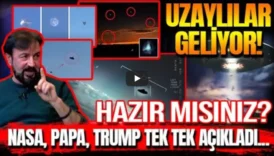Telepathy and Mind Communication
Telepathy is defined as the ability of an individual to communicate mentally with another person. Throughout history, this concept has been known by different names across various cultures and has often been considered a supernatural ability. However, in the 19th and 20th centuries, telepathy became a subject of scientific inquiry within the field of parapsychology, tested through various experiments.
This article explores the history of telepathy, scientific research, experiments, and its place in parapsychology. Additionally, the possible mechanisms, its role in modern science, and potential future research directions will be examined.
Historical Development of Telepathy
Telepathy in Ancient Times
The concept of telepathy has been an inherent belief among humans since ancient times. In Ancient Egypt, India, and China, mystical teachings considered mental communication a form of spiritual power.
- Ancient Egypt: Pharaohs were believed to communicate directly with the gods. Egyptian priests claimed to receive divine messages through meditation and rituals. Ancient tomb inscriptions describe ways to communicate mentally with the deceased.
- Ancient Greece: Philosophers like Plato and Aristotle discussed the nature of the soul and the mind, questioning whether thought transmission was possible. The Oracle of Delphi was said to convey messages from the gods to people.
- India and Buddhism: Hinduism and Buddhism advocated for the development of mental abilities. Yoga and meditation techniques were believed to enhance thought transmission and telepathic abilities. The Upanishads describe the human mind as interconnected with the universe, suggesting that with sufficient practice, mental communication is possible.
- Mesopotamia: The Babylonians and Assyrians regarded dream interpretation and prophecy as significant sources of knowledge. Priests performed special rituals to foresee the future.
The Middle Ages and the Renaissance
Throughout the Middle Ages, telepathy was associated with witchcraft and divination. However, during the Renaissance, supernatural abilities began to be analyzed more rationally.
- Middle Ages: The Church linked paranormal phenomena to demonic forces. Witches and sorcerers were persecuted for possessing telepathic abilities.
- Renaissance: Scientists and philosophers started exploring the limits of the human mind. Notable figures like Nostradamus, famous for his prophecies, can be considered early examples of telepathy.
Scientific Research and Experiments
Early Scientific Investigations
The scientific community has conducted numerous experiments to test telepathic communication. While some yielded positive results, telepathy remains controversial within mainstream science.
- Society for Psychical Research (SPR) and Early Studies: Founded in 1882 by Cambridge University scholars, SPR was among the first organizations dedicated to studying telepathy and other paranormal phenomena. Researchers like Frederic Myers and Edmund Gurney conducted experiments that provided some evidence supporting telepathic signals.
- J.B. Rhine and Duke University Experiments: In the 1930s, J.B. Rhine conducted telepathy experiments at Duke University. Using Zener cards, these experiments led to the emergence of the concept of extrasensory perception (ESP). Rhine’s research sparked academic interest in telepathy.
- Ganzfeld Experiments: In the 1970s, parapsychologists conducted controlled Ganzfeld experiments to detect telepathic signals. These experiments involved a sender transmitting specific images or thoughts while a receiver attempted to perceive them.
- CIA and the Stargate Project: In the 1970s, the U.S. Central Intelligence Agency (CIA) investigated the potential use of telepathy and remote viewing in military and intelligence operations. The Stargate Project reported some success in subjects visualizing distant locations, though mainstream science remains skeptical.
Types and Mechanisms of Telepathy
Telepathy is classified into several types:
- Emotional Telepathy: The transmission of emotions between individuals.
- Mental Telepathy: Direct transmission of thoughts and images from one person to another.
- Physical Telepathy: Perception of involuntary movements or reflexes by another person.
- Spiritual Telepathy: Establishing mental connections through higher states of consciousness.
Several hypotheses have been proposed to explain telepathy:
- Quantum Consciousness Theory: Some physicists suggest that brains may interact at the quantum level.
- Magnetic Field Interactions: The hypothesis that human brain waves could be detected and interpreted by others.
- Collective Unconsciousness Theory: Carl Jung’s theory suggests that all minds are connected through a shared consciousness field.
Modern Research on Telepathy
Telepathy continues to be explored in neuroscience and parapsychology:
- Koestler Parapsychology Unit (University of Edinburgh): Conducts controlled experiments on ESP and telepathy.
- Stanford University and Brain-Wave Communication Studies: Neuroscientists investigate the possibility of transmitting thoughts via brain waves.
Telepathy has fascinated people for centuries and remains a subject of scientific investigation. While definitive evidence is lacking, future advancements in technology and scientific methods may provide further insights into the nature of telepathic communication.
References
- Gauld, Alan. A History of Hypnotism. Cambridge University Press, 1992.
- Rhine, J.B. New Frontiers of the Mind: The Story of the Duke Experiments. Harper & Brothers, 1937.
- Krippner, Stanley. Advances in Parapsychological Research. Plenum Press, 1982.
- Radin, Dean. The Conscious Universe: The Scientific Truth of Psychic Phenomena. HarperOne, 1997.
- Targ, Russell & Puthoff, Harold. Mind Reach: Scientists Look at Psychic Ability. Delacorte Press, 1977.
- Sheldrake, Rupert. The Sense of Being Stared At: And Other Aspects of the Extended Mind. Crown Publishing Group, 2003.
- Broughton, Richard S. Parapsychology: The Controversial Science. Ballantine Books, 1991.
- Tart, Charles T. The End of Materialism: How Evidence of the Paranormal is Bringing Science and Spirit Together. New Harbinger Publications, 2009.
- Cardeña, Etzel, John Palmer & David Marcusson-Clavertz (Eds.). Parapsychology: A Handbook for the 21st Century. McFarland, 2015.





